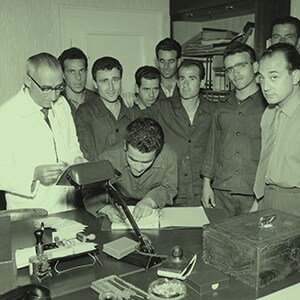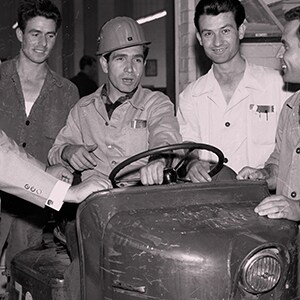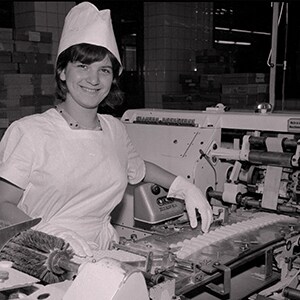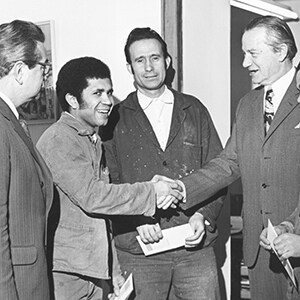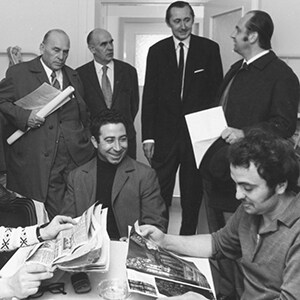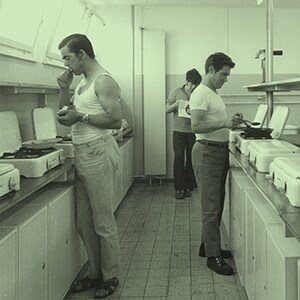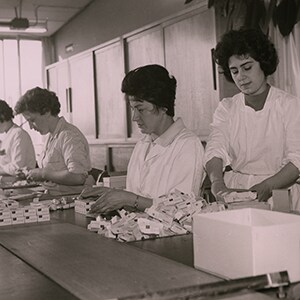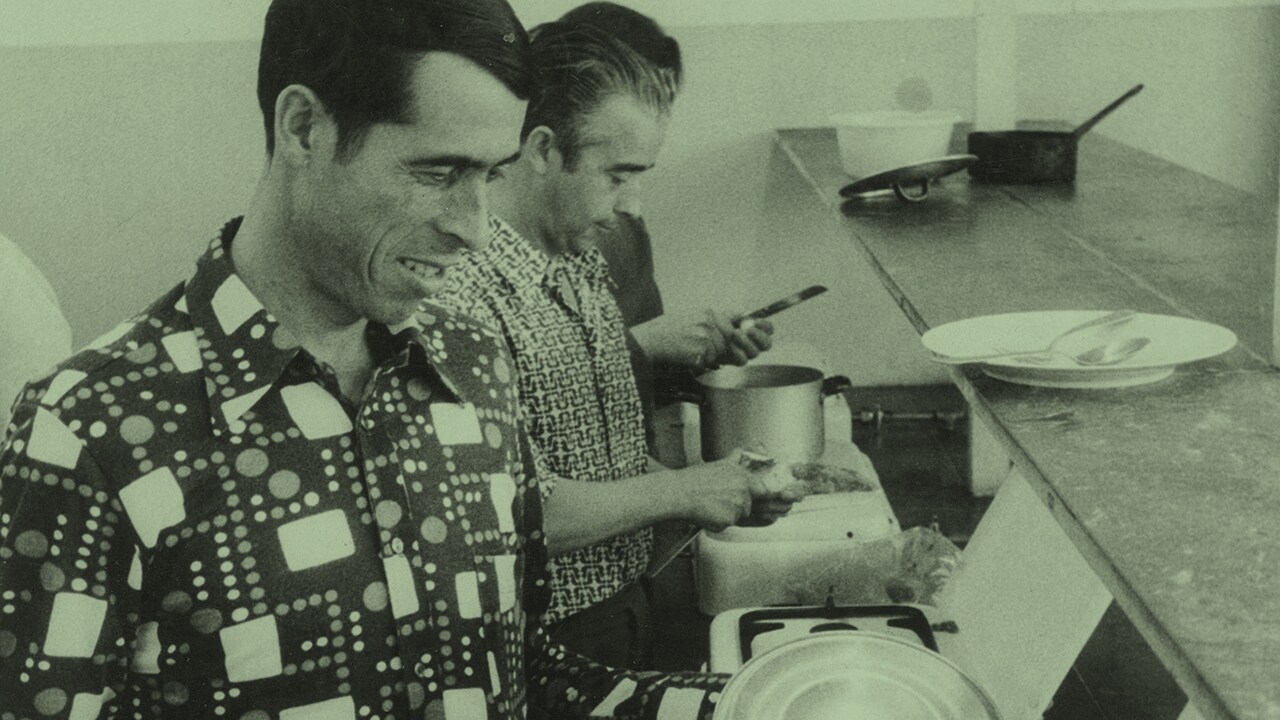
»We asked for workers. We got people instead.«
Max Frisch, 1965
In the 1950s, Germany experiences its economic miracle. The problem is that the booming Federal Republic does not have enough workers. The situation is quite different in many southern European countries, where there is too little work. The solution is obvious. In 1955, Germany and Italy enter into the first bilateral labor recruitment agreement.
In 1960, 30 Italians begin working at the Darmstadt company. By 1965, the number has risen to 390, one-third of whom are women. In the following years, a new phase of the employment policy begins. In 1975, the company already has 700 employees from outside Germany. The majority now come from Portugal. Others come from Spain, Yugoslavia, Turkey and Greece.
How can the new colleagues acclimatize? Only very few of them speak German. The company sets up a committee to help out: Setting up contacts, assisting in filling out and translating forms, explaining safety information – so many things are important. The new colleagues are referred to »guest workers«. This is intended to emphasize that their stay in Germany is for a limited period of time only: »You should not forget at any time that the foreign employees are here to earn money, and not to become German«, the company newspaper states as late as 1971. For a long time, promoting integration plays only a secondary role.
Life in hostels and dormitories is not without its effects on most of the migrants. Homesickness, isolation, guest workers of the same nationality grouping together, and a lack of personal contact between Germans and foreign nationals are all part of daily life. At the start of the 1970s, the first migrants begin bringing their families to Germany. The company Psychology department comments that »the desire to have the children learn an occupation here may indicate that the family is gradually ›putting down roots‹ in Germany. However, it certainly also has to do with the idea that when they return home, they will be sought-after skilled workers«.
But it is clear that the adjustment to the strange environment, »even if they are already a little older«, is not easy; »they require discreet supervision«. The experience of alienation characterizes the generations of migrants in the1970s and 1980s. Everyday life remains difficult for a long time. And seemingly unimportant matters become a problem: Preparing customary meals is not possible because the ingredients cannot be obtained. Where could eggplant or zucchini be purchased at that time? A great deal has changed since then. In 2019, people from 139 countries work for the company around the world. In Darmstadt alone, the workforce comprises colleagues from 96 nations working together for the company.
The employers decide in what areas the new colleagues will work. The migrants’ occupational backgrounds play a significant role in the decision. Although the company initially gives priority to qualified German workers, suitable workers of other nationalities also receive opportunities to work in their respective fields.
Many guest workers live in dormitories built specifically to accommodate them. In 1971, the company erects a new building on Frankfurter Strasse, near the factory. The low building can house 120 workers. The 30 living room/bedroom suites, with standardized furnishings and two bunkbeds, are designed for four people each.
Resolving language problems becomes a greater priority. In 1960, a bilingual Italian man is engaged as an interpreter, while a Spanish worker with German skills serves as a liaison for the Spanish workers. There is no liaison for Greek and Turkish nationals, »who have the most difficulty with the language«.

